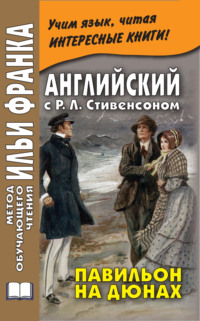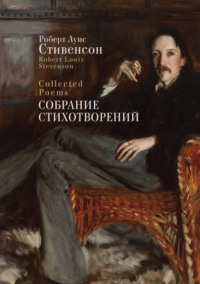 полная версия
полная версияMemoir of Fleeming Jenkin
Towards the end of November, 1877, this paper was handed about among those who were thought most likely, from their position and public spirit, to forward such a scheme, so clearly for the good of the community. Nay more, a systematic ‘canvass’ was set on foot; personal application the most direct was made use of. The thing was new, and its advantages not perfectly obvious to all at a glance. Everyone who knows with what enthusiastic earnestness Jenkin would take hold of, and insist upon, what he felt to be wholesome and right will understand how he persisted, how he patiently explained, and swept away objections that were raised. One could not choose but listen, and understand, and agree.
On the evening of 2nd January, 1878, or, to be more correct, the morning of the 3rd, two old school-fellows of his at the Edinburgh Academy walked home with him from an annual dinner of their ‘Class.’ All the way in glowing language he expounded his views of house inspection, and the protection of health, asking for sympathy. It was most readily given, and they parted from him with pleasant words of banter regarding this vision of his of grafting ‘cleanliness’ upon another quality said to be a growth, in some sort, of this northern land of ours.
But they reckoned hardly sufficiently on the fact that when Jenkin took a thing of this kind in hand it must be; if it lay within the scope of a clear head and boundless energy.
Having secured a nucleus of well-wishers, the next step was to enlist the sympathies of the general public. It was sought to effect this by a series of public lectures. The first of these (one of two) was given on 22nd January under the auspices of the Edinburgh Philosophical Institution. It was apparent to the shrewd lecturer that in bringing before the people a scheme like this, where there was much that was novel, it was necessary first of all that his audience should be aware of the evils to which they were exposed in their own houses, before unfolding a plan for a remedy. The correspondence already referred to as having been carried on in the summer of the previous year had shown how crude were the ideas of many persons well informed, or considered to be so, on this subject. For example, there are few now-a-days who are not aware that a drain, to be safe, must have at intervals along its course openings to the upper air, or that it must be ‘ventilated,’ as the phrase goes. But at the time spoken of there were some who went so far as to question this principle; even to argue against it; calling forth this forcible reply – ’Here is a pretty farce. You pour out a poison and send it off on its way to the sea, and forget that on its way there its very essence will take wings and fly back into your house up the very pipes it but recently ran down.’ A properly ‘trapped’ and ventilated drain was the cure for this.
And the lecturer proceeded to show that in Edinburgh, where for the most part house construction is good and solid, but, as in other towns, the bulk of the houses were built when the arrangements for internal sewerage and water supply were very little understood, many serious errors were made. ‘But,’ the lecturer went on to say, ‘Sanitary Science was now established on a fairly sound basis, and the germ theory, or theory of septic ferments, had explained much which used to be obscure. This theory explained how it was that families might in certain cases live with fair health for many years in the midst of great filth, while the dwellers in large and apparently clean mansions were struck down by fever and diphtheria. The filth which was found compatible with health was always isolated filth, and until the germs of some specific disease were introduced, this dirt was merely injurious, not poisonous. The mansions which were apparently clean and yet fever-visited were found to be those in which arrangements had been made for the removal of offensive matter, which arrangements served also to distribute poison germs from one house to another, from one room to another. These mansions had long suckers extended from one to another through the common sewer. Through these suckers, commonly called “house drains,” they imbibed every taint which any one house in the system could supply. In fact, arrangements were too often made which simply “laid on” poison to bed-rooms just as gas or water was laid on. He had known an intelligent person declare that no harm could come up a certain pipe which ended in a bed-room, because nothing offensive went down. That person had never realised the fact that his pipe joined another pipe, which again joined a sewer, which again whenever there was an epidemic in the neighbourhood, received innumerable poison germs; and that, although nothing more serious than scented soap and water went down, the germs of typhoid fever might any day come up.’
Professor Jenkin then proceeded to show how a house might be absolutely cut off from all contamination from these sources of evil. Then by means of large diagrams he showed the several systems of pipes within a house. One system coloured red showed the pipes that received foul matter. A system marked in blue showed pipes used to ventilate this red system. The essential conditions of safety in the internal fittings of a house – it was inculcated – were that no air to be breathed, no water to be drunk, should ever be contaminated by connection with red or blue systems. Then in yellow were shown the pipes which received dirty water, which was not necessarily foul. Lastly a white system, which under no circumstances must ever touch the ‘red,’ ‘blue,’ or ‘yellow’ systems. Such a diagram recalled the complicated anatomical drawings which illustrate the system of arteries and veins in the human frame. Little wonder, then, that one gentleman remarked, in perplexity, that he had not room in his house for such a mass of pipes; but they were already there, with other pipes besides, all carefully hidden away, as in the human tenement, with the inevitable result – as the preacher of cleanliness and health declared – ‘out of sight, out of mind.’
In plain and forcible language were demonstrated the ills this product of modern life is heir to; and the drastic measures that most of them demand to secure the reputation of a healthy house. Lastly the formation of an Association to carry out the idea (already sketched) cheaply, was briefly introduced.
Next morning, January 23rd, was the moment chosen to lay the scheme formally before the public. In all the Edinburgh newspapers, along with lengthy reports of the lecture, appeared, in form of an advertisement, a statement 4 of the scheme and its objects, supported by an imposing array of ‘Provisional Council.’ In due course several of the Scots newspapers and others, such as the Building News, gave leading articles, all of them directing attention to this new thing, as ‘an interesting experiment about to be tried in Edinburgh,’ ‘what promises to be a very useful sanitary movement, now being organised, and an example set that may be worthy of imitation elsewhere,’ and so on.
Several of the writers waxed eloquent on the singular ingenuity of the scheme; the cheap professional advice to its adherents, &c.; and the rare advantages to be gained by means of co-operation and the traditional ‘one pound one.’
The Provisional Council was absolutely representative of the community, and included names more than sufficient to inspire confidence. It included the Lord-Lieutenant of the county, Lord Rosebery; the Lord Justice Clerk, Lord Moncrieff; the Lord Advocate; Sir Robert Christison; several of the Judges of the Court of Session; the Presidents of the Colleges of Physicians, and of Surgeons; many of the Professors of the University; the Bishop of Edinburgh, and the Dean; several of the best known of the Clergy of the Church of Scotland, Established, Free, and of other branches; one or two members of Parliament; more than one lady (who should have been perhaps mentioned earlier on this list) well known for large views and public spirit; several well-known country gentlemen; one or two distinguished civil engineers and architects; and many gentlemen of repute for intelligence and business qualities.
Very soon after the second of the promised lectures, the members of the new Society began to be numbered by hundreds. By the 28th of February, 500 subscribers having been enrolled, they were in a position to hold their first regular meeting under the presidency of Sir Robert Christison, when a permanent Council composed of many of those who had from the first shown an interest in the movement – for example, Professor (now Sir Douglas) Maclagan and Lord Dean of Guild (now Sir James) Gowans, Professor Jenkin himself undertaking the duties of Consulting Engineer – were appointed. And Jenkin was singularly fortunate in securing as Secretary the late Captain Charles Douglas, a worker as earnest as himself. It was the theory of the originator that the Council, composed of leading men not necessarily possessed of engineering knowledge, should ‘give a guarantee to the members that the officials employed should have been carefully selected, and themselves work under supervision. Every householder in this town,’ he adds, ‘knows the names of the gentlemen composing our Council.’
The new Association was a success alike in town and country. Without going far into statistics it will be evident what scope there was, and is, for such operations when it is stated that last year (1885) 60 per cent. of the houses inspected in London and its neighbourhood were found to have foul air escaping direct into them, and 81 per cent. had their sanitary appliances in an unsatisfactory state. Here in Edinburgh things were little, if any, better; as for the country houses, the descriptions of some were simply appalling. As the new Association continued its operations it became the rôle of the Consulting Engineer to note such objections, hypothetical or real, as were raised against the working of his scheme. Some of these were ingenious enough: but all were replied to in order, and satisfactorily resolved. It was shown, for example, that ‘you might have a dinner party in your house on the day of your inspection’; that the Association worked in the utmost harmony with the city authorities, and with the tradesmen usually employed in such business; and that the officials were as ‘confidential’ as regards the infirmities of a house as any physician consulted by a patient. The strength of the engineering staff has been varied from time to time as occasion required; at the moment of writing employment is found in Edinburgh and country districts in various parts of Scotland for five engineers temporarily or permanently engaged.
The position Jenkin claimed for the Engineers was a high one, but not too high: thus he well defined it: —
‘In respect of Domestic Sanitation the business of the Engineer and that of the medical man overlap; for while it is the duty of the engineer to learn from the doctor what conditions are necessary to secure health, the engineer may, nevertheless, claim in his turn the privilege of assisting in the warfare against disease by using his professional skill to determine what mechanical and constructive arrangements are best adapted to secure these conditions.’ 5
Flattery in the form of imitation followed in due course. A branch was established at St. Andrews, and one of the earliest of similar institutions was founded at Newport in the United States. Another sprang up at Wolverhampton. In 1881 two such societies were announced as having been set on foot in London. And the Times of April 14th, in a leading article of some length, drew attention to the special features of the plan which it was stated had followed close upon a paper read by Professor Fleeming Jenkin before the Society of Arts in the preceding month of January. The adherents included such names as those of Sir William Gull, Professor Huxley, Professor Burdon Sanderson, and Sir Joseph Fayrer. The Saturday Review, in January, had already in a characteristic article enforced the principles of the scheme, and shown how, for a small annual payment, ‘the helpless and hopeless condition of the householder at the mercy of the plumber’ might be for ever changed.
The London Association, established on the lines of the parent society, has been followed by many others year by year; amongst these are Bradford, Cheltenham, Glasgow, and Liverpool in 1882; Bedford, Brighton, and Newcastle in 1883; Bath, Cambridge, Cardiff, Dublin, and Dundee in 1884; and Swansea in 1885; and while we write the first steps are being taken, with help from Edinburgh, to establish an association at Montreal; sixteen Associations.
Almost, it may be said, a bibliography has been achieved for Fleeming Jenkin’s movement.
In 1878 was published Healthy Houses (Edin., David Douglas), being the substance of the two lectures already mentioned as having been delivered in Edinburgh with the intention of laying open the idea of the scheme then in contemplation, with a third addressed to the Medico-Chirurgical Society. This book has been long out of print, and such has been the demand for it that the American edition 6 is understood to be also out of print, and unobtainable.
In 1880 was printed (London, Spottiswoode & Co.) a pamphlet entitled What is the Best Mode of Amending the Present Laws with Reference to Existing Buildings, and also of Improving their Sanitary Condition with due Regard to Economical Considerations? – the substance of a paper read by Professor Jenkin at the Congress of the Social Science Association at Edinburgh in October of that year.
The first item of Health Lectures for the People (Edin., 1881) consists of a discourse on the ‘Care of the Body’ delivered by Professor Jenkin in the Watt Institution at Edinburgh, in which the theories of house sanitation are dwelt on.
House Inspection, reprinted from the Sanitary Record, was issued in pamphlet form in 1882. And another small tract, Houses of the Poor; their Sanitary Arrangement, in 1885.
In this connection it may be said that while the idea formulated by Jenkin has been carried out with a measure of success that could hardly have been foreseen, in one point only, it may be noted, has expectation been somewhat disappointed as regards the good that these Associations should have effected – and the fact was constantly deplored by the founder – namely, the comparative failure as a means of improving the condition of the dwellings of the poorer classes. It was ‘hoped that charity and public spirit would have used the Association to obtain reports on poor tenements, and to remedy the most glaring evils.’ 7
The good that these associations have effected is not to be estimated by the numbers of their membership. They have educated the public on certain points. The fact that they exist has become generally known, and, by consequence, persons of all classes are induced to satisfy themselves of the reasons for the existence of such institutions, and thus they learn of the evils that have called them into being.
Builders, burgh engineers, and private individuals in any way connected with the construction of dwellings in town or country have been put upon their mettle, and constrained to keep themselves abreast with the wholesome truths which the engineering staff of all these Sanitary Associations are the means of disseminating.
In this way, doubtless, some good may indirectly have been done to poorer tenements, though not exactly in the manner contemplated by the founder.
Now, if it be true that Providence helps those who help themselves, surely a debt of gratitude is due to him who has placed (as has been attempted to be shown in this brief narrative) the means of self-help and the attainment of a palpable benefit within the reach of all through the working of a simple plan, whose motto well may be, ‘Healthy Houses’; and device a strangled snake.
A. F.1
Reminiscences of My Later Life, by Mary Howitt, Good Words, May 1886.
2
See paper read at the Congress of the Social Science Association, Edinburgh, October 8, 1880.
3
It was ultimately agreed not to appoint an officer of this kind till occasion should arise for his services; none has been appointed.
4
Briefly stated, the points submitted in this prospectus were these:
1. That the proposed Association was a Society for the benefit of its members and the community that cannot be used for any purposes of profit.
2. The privileges of members include the annual inspection of their premises, as well as a preliminary report on their condition with an estimate of the cost of any alterations recommended.
3. The skilled inspection from time to time of drains and all sanitary arrangements.
4. No obligation on the part of members to carry out any of the suggestions made by the engineers of the Association, who merely give skilled advice when such is desired.
5. The officers of the Association to have no interest in any outlay recommended.
6. The Association might be of great service to the poorer members of the community.
5
Healthy Houses, by Professor Fleeming Jenkin, p. 54.
6
It is perhaps worth mentioning as a curiosity of literature that the American publishers who produced this book in the States, without consulting the author, afterwards sent him a handsome cheque, of course unsolicited by him.
7
It is true, handsome tenements for working people have been built, such as the picturesque group of houses erected with this object by a member of the Council of the Edinburgh Sanitary Association, at Bell’s Mills, so well seen from the Dean Bridge, where every appliance that science can suggest has been made use of. But for the ordinary houses of the poor the advice of the Association’s engineers has been but rarely taken advantage of.











